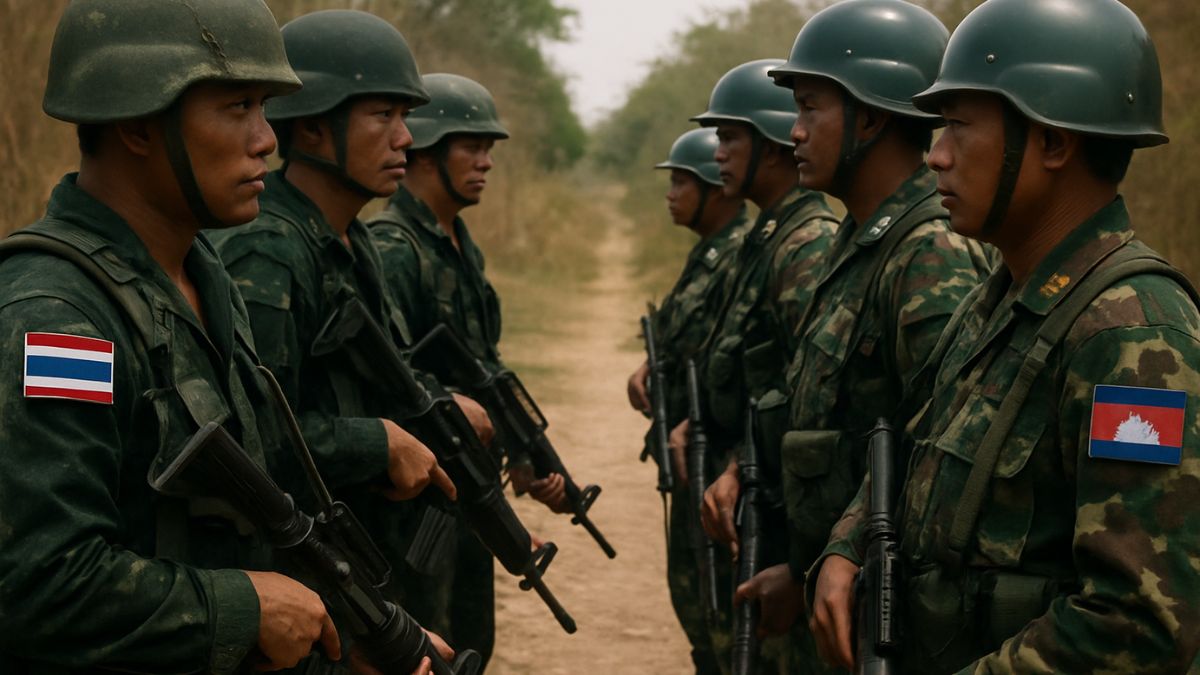After 5 days of exchanging fire at their border, Thailand and Cambodia on Monday (July 28) met in Malaysia with their leaders agreeing to an immediate and unconditional ceasefire. The announcement brough to end the Southeast Asian neighbours’ deadliest clash in over a decade.
In the recent border clash between Thailand and Cambodia, at least 43 people, many of them civilians, were killed while over 300,000 in both countries were displaced. While they have been fighting for several years, Thailand-Cambodia’s recent skirmish came after the killing of a Cambodian soldier in May.
Monday’s truce between the two countries followed a sustained push by Malaysian Premier Anwar Ibrahim and US President Donald Trump, with the latter warning Thailand and Cambodian leaders that trade negotiations would not progress if fighting continued.
Thailand-Cambodia ceasefire: Are forces maintaining peace at the border?
Thailand’s acting Prime Minister Phumtham Wechayachai on Tuesday (July 29) told media that the border areas remained calm, but he accused Cambodian troops of violating the ceasefire early that day, which was later denied by Cambodia. Defence Minister Tea Seiha stated that Cambodian troops strictly abided by the ceasefire since midnight.
However, the situation seemed to under control as Thai army spokesperson Major-General Winthai Suvaree too assuaged fears, suggesting that military commanders from both sides held talks and agreed to maintain the ceasefire, stop any troop movement, and facilitate the return of the wounded and dead.
“The armies of both Cambodia and Thailand for respecting and implementing this agreement,” wrote Cambodia’s ex-premier Hun Sen on social media.
How Thailand and Cambodia are ensuring peace despite trading accusations?
On Wednesday (July 30) too, both the sides blamed each other of breaking the truce, with Cambodia taking military attaches and diplomats to a border checkpoint destroyed by fighting to verify the ceasefire. This came after the Thai military accused Cambodian forces of breaching the truce at three separate locations.
Thailand’s vice foreign minister took note of Cambodia taking defence attaches to the border, and said Bangkok would soon do the same, when it was safe to proceed. “Cambodia was able to act more quickly than Thailand because they were the party that initiated the attacks, which gave them immediate command and control,” he said.
Despite this exchange of barbs, the countries are working to make the ceasefire work which has now paved the way for a high-level military meeting that includes defence ministers on August 4 in Cambodia.
Despite this exchange of barbs, the countries are working to make the ceasefire work which has now paved the way for a high-level military meeting that includes defence ministers on August 4 in Cambodia.
Did Trump’s tariff threat have any impact on Thailand-Cambodia ceasefire?
Last week, US President Donald Trump took to social media, claiming that Thailand and Cambodia want peace and are eager to continue trade with the United States. “I just had a very good call with the Prime Minister of Cambodia, and informed him of my discussions with Thailand, and its Acting Prime Minister.”
Both Parties are looking for an immediate Ceasefire and Peace. They are also looking to get back to the “Trading Table” with the United States, which we think is inappropriate to do until such time as the fighting STOPS, Trump wrote on social media.
Thailand and Cambodia face a tariff of 36% on their goods in the US, which is their biggest export market. After their ceasefire deal, Trump shared that he has instructed his trade team to restart tariff talks.
